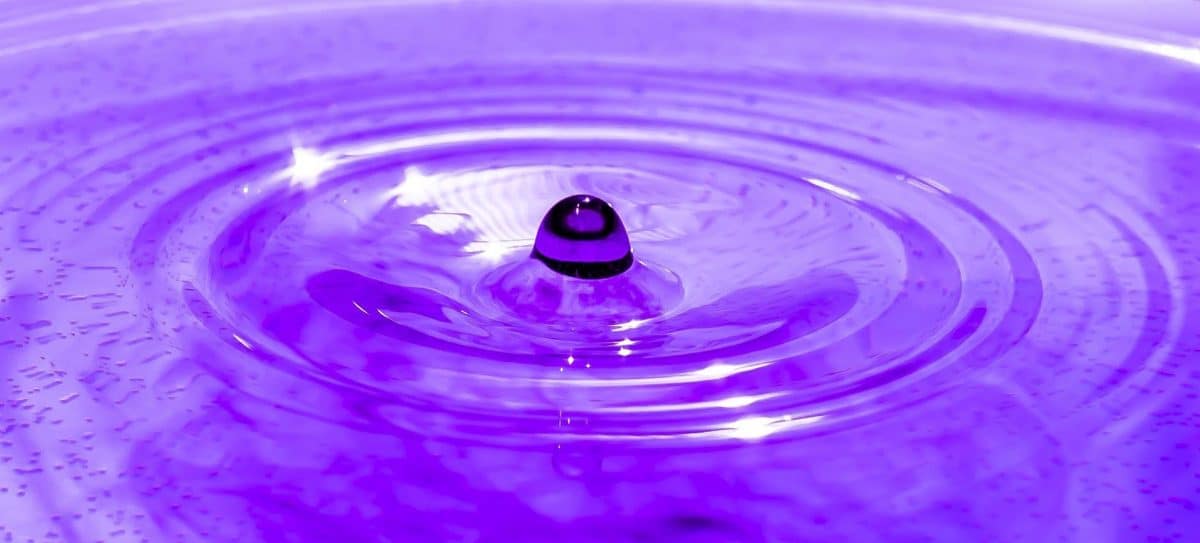Everything to Know About Flexographic Inks

Our water-based acrylic polymers are used for a wide variety of applications that span multiple industries. Gellner Industrial’s water-based acrylic polymers are used in many ink solutions, such as Flexographic and Gravure inks. Flexographic inks are primarily used in the process of flexography to print ink on materials such as plastic bags, newspapers, catalogues, food packaging, corrugated cardboard, cardboard boxes, and other types of packing mediums. In this article we’ll take a brief look at the process of Flexographic printing, the types of Flexographic inks that are most commonly used, and how our water-based acrylic polymers are used to aid in this specialized mode of printing.
What is Flexographic Printing?
Flexographic printing – also referred to as flexo printing – is a very common and popular method for manufacturing large orders of custom labels. The flexographic printer is able to produce thousands of custom labels in a very short amount of time through the transfer of ink onto a material, such as paper, film, or cardboard. The printing material is mounted to fast-rotating cylinders using flexible printing plates to get the job done. Here are just a few of the labels and products that can be produced through flexographic printing:
- Multi-ply labels: Also known as multi-layer labels, these are the type of labels you find on products that look like small booklets and expended content labels. These leaflets are laminated to a pressure sensitive label so that both the graphics and text can be printed on both sides of the leaflet. These labels do not need adhesive to be peeled back for reading then re-sealed for later reference. Think of the label you may find on a plastic container of weed remover that has multiple layers.
- Flexible packets: Packets such as these contain single-use samples or variations of products, such as peanut butter, hair conditioner/shampoo, beauty products, and any other product that can be transferred into the packaging. This type of packaging does not need a label, as the graphics are printed straight onto the packaging material. This type of packaging offers an air-tight seal for products that are perishable or prone to damage from moisture. This type of packaging can be seen in sunscreen and body lotion samples and packets as well.
- Shrink-sleeve labels: Studies have shown that these colorful, custom-printed graphics increase revenue and sales by over 20% when compared to pressure-sensitive labels. These can be seen wrapped around plastic and metal containers such as small energy-shot drinks, plastic containers of various drinks, and beauty products such as shampoo and supplements.
- Pressure-sensitive labels: Often used for squeezable and contoured products such as ketchup, these self-adhesive labels can be applied to just about any product type or container shape/material. These are often used in beverage, wine and spirits, food, household chemicals, and automotive products.
Applications of Flexographic Printing
Imagine a day without packaging for food and drinking products, flexible packaging, labels, business forms, foil, folding cartons, newspapers, wallpaper, gift wrapping paper, and envelopes. Flexographic printing is the fastest-growing system of printing in the world.
What is Flexographic Ink?
The popularity of flexographic printing is due to its speed, cost-effectiveness, and reduced toll on the environment. Flexographic ink comes in three main varieties: water-based, UV curable, and solvent-based. The substrate type – or printing surface – will ultimately dictate the ink that will be used for each application. 
The Reason Behind Water-Based Flexographic Ink
Water-based acrylic polymers are used in inks every day, worldwide. This type of ink maximizes profitability while also reducing the impact our manufacturing process has on the environment. There are a few main components that go into a water-based flexographic ink:
- Additive: If a specialized product such as silicones or waxes is to be produced, a formulator may need to include additional chemicals or substances to make the ink work.
- Amine: The chemical(s) used to transform a resin into a liquid state.
- Colorant: This refers to the pigment or dye used to transfer the desired color to the ink.
- Diluent: Depending on the desired thinness/thickness (viscosity) of the ink, different amounts of diluents are necessary. The most common diluent used is water.
- Resin: Typically made of acrylic, this is the vehicle that is used to carry the pigment or dye to bond it to the substrate (packaging material).
- Surfactant: A surfactant affects the surface energy of the ink. This can take the form of a wetting agent or de-foamer.
Flexo Printing Inks
Our acrylic polymers are used in flexo printing inks to provide superior adhesion to non-porous surfaces such as metals, glass, polypropylene, and vinyl, while maintain excellent press open time and notable alkali resistance. Our acrylic polymers are used in ink blends for newspaper, grocery packaging, envelopes, adhesive tapes, milk and beverage containers, plastic bags, paper sacks, folding cartons, and disposable cups and containers.
Acrylic Polymers and Resins for Printing Inks
Gellner Industrial is a world-wide leader in the development and production of water-based acrylic polymers, synthetic resins, hydroxyl functional acrylic polymers, and WonderWet. Visit our contact page or give us a call at (570) 668-8800 to learn more or request a quote.
